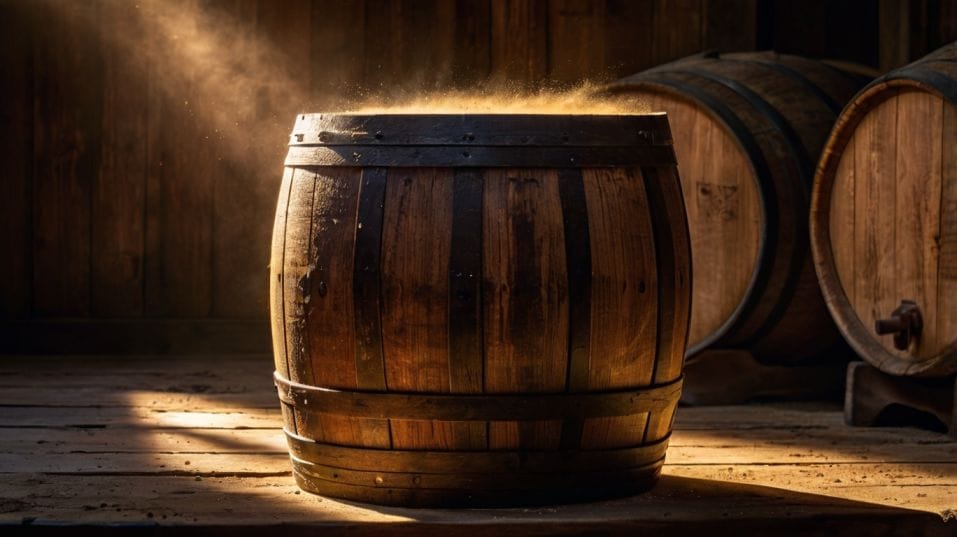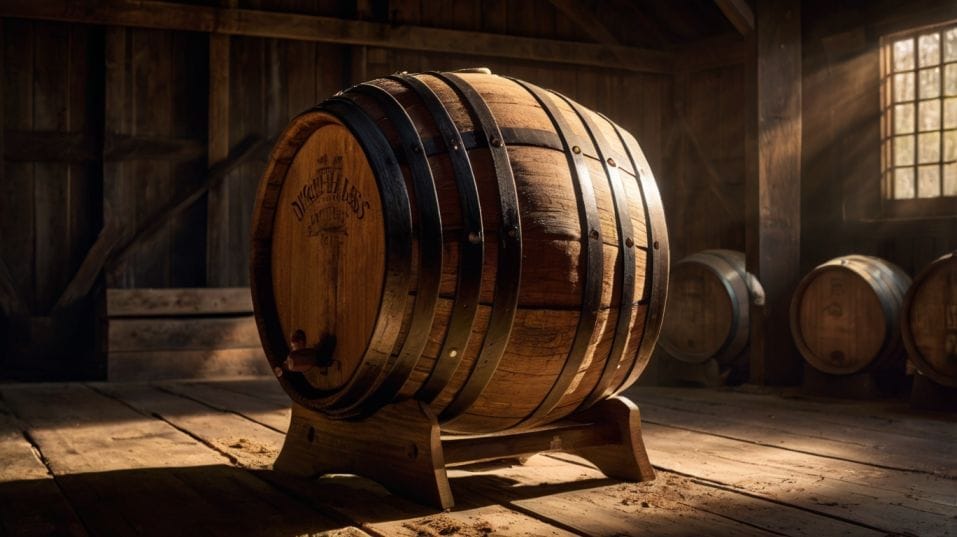The Ultimate Beginner’s Guide to Whiskey
New to whiskey? This no-nonsense beginner’s guide helps you taste smarter, buy better bottles, and build a confident palate—one pour at a time.

What if whiskey wasn’t intimidating—but thrilling? If you're new to whiskey, this guide is your launchpad. No jargon. No pressure.
Just the clarity and confidence to help you taste with purpose and build your own point of view.
Because real whiskey knowledge isn’t about flexing—it’s about unlocking flavor, knowing what you like, and enjoying every pour a little more than the last.
Start with the Basics—But Don’t Stay There
Whiskey is distilled grain, aged in wood. That’s it. But within that simple definition lies a universe of variations.
Different countries have different laws, traditions, and styles—but instead of memorizing a textbook, start by understanding the levers that affect flavor.
The Grains
The grains used—called the mash bill—are the foundation.
- Corn brings sweetness and roundness.
- Rye gives spice, heat, and a sharp edge.
- Barley adds complexity and subtle richness.
- Wheat softens everything out.
Most whiskey styles use a blend of these. Bourbon is legally required to have at least 51% corn. Rye whiskey? Minimum 51% rye.
Scotch and Irish whiskies lean heavily on barley. These ingredients change the feel of the whiskey on your palate. The more you taste with this in mind, the faster you’ll move from guessing to knowing.

Age Isn’t Everything
Aging is the second major factor—but it’s misunderstood. Time in a barrel isn’t just about patience. It’s about interaction between spirit, wood, and environment. Hot climates like Kentucky create bold, woody bourbons fast.
Cool coastal areas like Scotland age slower, drawing out subtler, more delicate notes. But don’t fall into the trap of assuming older is better. Sometimes too much oak smothers everything else. Balance beats age every time.
Casks: The Flavor Engine
Casks are flavor engines. Virgin American oak tends to give caramel, vanilla, and spice. Ex-sherry casks from Spain bring dried fruit, nuttiness, and richness.
Wine casks add tannins and earth. Start asking what your whiskey was aged in. It’s one of the most direct ways to decode flavor.
Drink Like You Mean It
You’re not here to slam shots. You’re here to taste. The most important move you can make? Slow down.
Use the Right Glass
Pour less, taste more. Use a proper glass—tulip-shaped, like a Glencairn, Copita, or even a small wine glass.
That shape traps aroma, which is 80% of flavor perception. Forget those heavy-bottomed tumblers you see in movies—they’re for aesthetics, not tasting.
Engage All the Senses
Let it breathe. Pour, wait a minute. Let the alcohol vapors settle. Then bring the glass to your nose—not inside your nose. Inhale gently with your mouth slightly open. If it burns, pull back. Your first job is to notice, not suffer.
Add a few drops of water. This isn’t “watering it down.” It’s technique. Water opens up esters and volatile compounds that reveal new flavors.
If it’s a high-proof whiskey (above 50% ABV), water is almost essential for full tasting. Swirl it. Smell again. Taste slowly.
Let it coat your tongue before you swallow. Feel the texture. Note the finish—how long the flavors linger, and whether they evolve.
Build Your Vocabulary
Forget rigid tasting notes. What matters is what you notice. Say it out loud or write it down. “Tastes like cinnamon gum.” “Smells like campfire and sea air.”
“Weirdly reminds me of my grandma’s kitchen.” These associations build your personal palate map—far more useful than copying someone else’s checklist.
Learn to Navigate Styles Without Getting Lost
There’s no shortcut to tasting across the spectrum—but there is a smart path. Start broad. Try bourbon. Try a rye. Try a classic Scotch. Compare them. Ask yourself what felt different. Texture? Spice? Sweetness?
Understand Style Signatures
Then drill down. Within bourbon alone, you’ll find endless variety based on mash bill, barrel char, warehouse placement, and proof.
In Scotch, the difference between a Highland malt and an Islay malt is night and day. Japanese whisky borrows from Scotch traditions but often adds a layer of finesse and subtlety.
Don't aim to memorize every region. Aim to understand patterns. Peated whiskies (like Laphroaig or Ardbeg) will taste smoky. Sherry-aged whiskies (like GlenDronach) will taste rich and dark-fruited.
Rye-forward bourbons will be spicy. Wheated bourbons will feel smoother and softer. Once you know what style speaks to you, you can explore deeper instead of wider.
Build Insight, Not Trivia
Collect information with intent. Learn a bottle’s mash bill. Look up the aging method. Ask how the distillery made it. You don’t need trivia—you need insight.
Build a Smarter Shelf
You don’t need a wall of whiskey to get good. In fact, too much variety early on just creates noise. Start with a few bottles you can return to over time. This gives you a consistent reference point to track your evolving palate.
Core Bottles, Not Hype
Have a bourbon. A rye. A single malt. Maybe something weird—a peated Scotch or a Japanese blend. The goal isn’t coverage, it’s contrast. Tasting side by side reveals more than tasting in isolation.
Skip chasing hype bottles. Limited editions, unicorns, and influencer picks are often overpriced distractions. Real collectors build a relationship with their shelf. They revisit. They re-taste. They compare batches.
Take Notes, Stay Curious
Take notes. Seriously. A quick notebook or a note app will do. Don’t overthink it. Date, bottle, proof, a few quick thoughts. “Hot up front, sweet mid-palate, short finish.” Over time, you’ll notice trends in what you like—and what you don’t.
Know the Culture—Then Make It Yours
Whiskey has deep roots. It’s ritual in Ireland, industry in Scotland, rebellion in Kentucky, art in Japan. But you don’t need to bow to tradition to appreciate it. Respect the craft. Learn the context. But make your own rules.
Reject the Snobbery
Don’t let anyone talk you into “graduating” to peat or cask strength. You don’t need to drink something difficult just to feel advanced. Great whiskey isn’t always aggressive. Some of the most elegant, balanced pours are subtle.
Avoid snobs. Seek out educators. Bartenders, distillers, and old-school collectors are better sources of knowledge than Instagram reviews and Reddit flexes. Taste with people who want to talk flavor, not status.
Stay Open, Stay Grounded
Most of all, stay curious. The deeper you go, the more rewarding it gets. There’s always a new cask finish, a forgotten style, a flavor twist you didn’t expect.
Final Thoughts
Here’s the truth: whiskey doesn’t get better when you know everything—it gets better when you know what you’re tasting. Your palate is your most powerful tool. Train it. Trust it. Evolve it.
Start small. Taste with purpose. Revisit bottles. Ask better questions. Don’t chase trophies. Build a shelf that teaches you something every time you pour from it.
So pour something tonight—something you’ve never tried or haven’t really thought about. Give it five minutes of your full attention. Notice it. Describe it. Challenge yourself to learn one new thing from it. That’s how you grow. One pour at a time.




